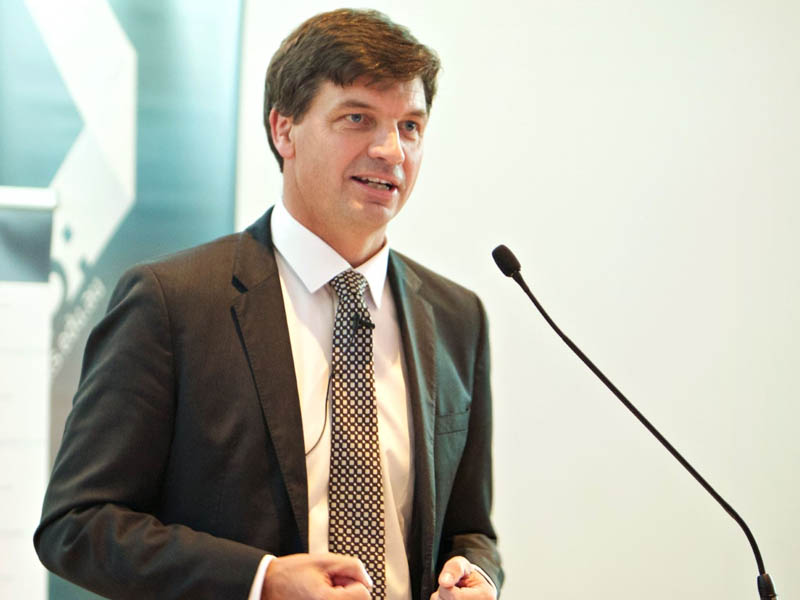The Snowy Hydro expansion is an example of how good cities policies aren’t properly realised until decades in the future, Assistant Minister for Cities and Digital Transformation Angus Taylor said.
Announced by Prime Minister Malcolm Turnbull on Thursday, the planned four-year project will see the creation of a new series of tunnels and power stations that could power up to 500,000 Australian homes.
“This is an announcement that I think does what great policy in Australia always does, it attaches our past with our future. What you’ve got is the potential for perhaps the greatest energy battery in the world – certainly in Australia – through storage,” Mr Taylor told InnovationAus.com.

“We all know that energy storage is absolutely crucial in solving problems with our energy grid, and there under our noses is this extraordinary opportunity, and what could be one of the greatest engineering project in our history.”
The Snowy Hydro scheme was led by the Labor government in 1949 and completed in 1974, with a network of nine power stations, 16 dams, 145 kilometres of tunnels and 80 kilometres of aqueducts.
Mr Taylor, whose grandfather William Hudson was chief engineer of the Snowy Hydro scheme during its construction period, said expansion and renewal of the scheme had always part of the original plan.
“It’s a potential that my grandfather talked to me about when I was 10,” Mr Taylor said. “He always said that the great untapped potential of the Snowy Hydro was this pump storage, and now it’s real.”
The Minister said that he is focusing on how his portfolio’s policies will impact cities decades into the future.
“We make decisions today that will have an impact in 30 or 40 years, and that’s why our work is exciting.”
Speaking at InnovationAus.com’s Intelligent Communities event in Melbourne on Thursday morning, Mr Taylor emphasised the importance of collaboration between all levels of government in creating smart cities.
“Collaboration between the three levels of government is absolutely crucial – this is the new model for working. Local government and state government is all for it for the most part, which is fantastic,” he said in the speech.
“Many of the biggest problems we face have to be solved at the local level. That’s a crucial agenda and it will continue on.”
Victorian Minister for Suburban Development Lily D’Ambrosio also spoke at the event, and said she had met with Minister Taylor to identify areas where the State and Federal governments could work together.
“We’re now in a time where there is great hope for us to be able to line up all State and Federal governments with a vision for better outcomes in the way cities evolve,” Ms D’Ambrosio said.
All levels of government were investigating how digital technologies could help make cities smarter and more efficient for citizens, with Mr Taylor pointing to better route planning and signalling in public transport.
“We think there’s enormous potential for digital technologies to have an impact in our cities. We’re only really scratching the surface now in terms of our impact,” he said.
In addition to working with other governments, the Commonwealth also sees a big role for the private sector developing smart communities, he said. Mr Taylor alluded to a Future Ready program he announced last week, where government is helping to bring startups and service providers together with local authorities, to accelerate the uptake of new smart city technology.
“We’re trying to make connections between local councils and service providers, to understand what’s possible … and how that’s changing. That’s the crucial piece that I think has been missing,” Mr Taylor said.
“The money is available, but connections and a change in culture to see technology as a solution to very practical problems is the piece we really need to focus on.
“Many of the best ideas are thing being done overseas and the private sector is well positioned to bring those ideas to Australia, to customise them and make them work here.”
“We don’t have multinational governments but we do have businesses that work across countries. We think Australian companies can play a big role in the digital transformation of our cities and suburbs, and we’re pushing hard to get more SMEs involved.”
In his speech, Mr Taylor outlined the three key parts of the government’s cities agenda: smart policy, smart technology and smart investment.
“There is a recognition that if we’re really going to drive smart cities it’s about much more than just money, it’s about people connecting, collaborating, learning and creating a vision which technology can help us achieve,” he said.
“This is a big, broad-ranging agenda, one that I know state and local government is interested in as much as we are, and one that will ultimately only succeed through collaboration.”
Do you know more? Contact James Riley via Email.

